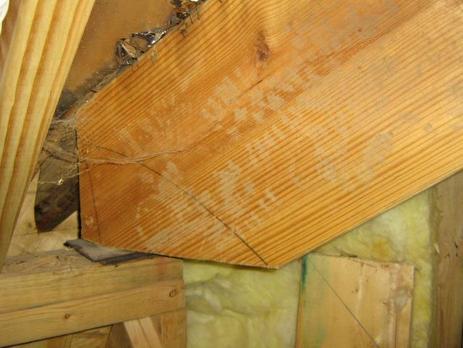 Do you know how to properly display the American flag on Memorial Day?
With Memorial Day not far away, it is never too early to start preparing of it. The following procedure is for a standing flagpole: In the morning when the flag is posted it should be raised properly to half-mast (staff). Proper raising of the flag is to take the flag to the top of the pole and then slowly and with honor, lower the flag to half-mast. Then at the Noon hour the flag should be slowly lowered and then briskly with pride and honor, raised to the top of the flagpole. It should remain at this position for the rest of the day. Why half mast and then full mast? The first part of the day while the flag is at half-mast is in remembrance for those that have given their life for our country. The rest of the day when the flag is at full mast is in remembrance and in honor for those that are serving or have served our country. I hope all will fly the American Flag with pride on Memorial Day! On a side note: If your flag is in faded, torn or tattered do not fly it! Go and purchase a new flag and then call a local Boy Scouts of America district office or contact a local BSA Troop and ask them if you can bring your flag to them so that it can be honorably retired and disposed of. If you have never seen a USA flag properly retired it is a very moving experience that all should witness.  That is an old phrase that means we are running out of the good stuff! The apples are always fresher at the top of the barrel and tend to become a stinky pile of mush at the bottom. The same holds true with our housing stock, as the stock depletes(like we are seeing now) the homes left on the market are for the most, the bottom of the barrel. Several of my fellow home inspectors were talking about this just a few weeks ago over lunch and we all agreed that the homes we are seeing now are some of the worst we have see in years. It seems that the changeover started a couple of months ago and it has done nothing but progress with no end in sight. The sad part is that the ones who are really getting hurt are those that do not get an inspection and those that pay for two, three or more inspections trying to find a descent home. So what can be done? It needs to start with the real estate agents taking control of their sellers that have their homes listed with them. Agents just need to flat tell their sellers that they need to repair the obvious items like rotting wood, dripping faucets, water stains on ceilings, leaking roofs, windows that do not open, etc, etc, etc…….. It's almost like everyone is looking at the world through rose colored glasses with blinders! Starting in 2008, the National Electrical Code®(NEC®) required new and renovated dwellings to have tamper-resistant (TR) receptacles. These receptacles have spring-loaded shutters that close off the contact openings, or slots, of the receptacles. Although the NEC has required TR receptacles since 2008 this does not always mean that all homes built after that year will have them. It all depends on the local adoption of the code by your city, township or municipality. As a home inspector I see new homes with out TR receptacles because many areas have chosen to not adopt this section or have modified the code. This type of receptacles does cost more and builders have been upset about being required to put them in their homes and this could be the reason that some areas are not requiring them.
When a plug is inserted into the receptacle, both springs are compressed and the shutters then open, allowing for the metal prongs to make contact to create an electrical circuit. Because both springs must be compressed at the same time, the shutters do not open when a child attempts to insert an object into only one contact opening, and there is no contact with electricity. Many feel that tamper- resistant receptacles are an important next step to making the home a safer place for children. If you do have TR receptacles you will notice that it can be difficult to insert the blades of a plug into the receptacle at first. As that receptacle is used more it will become easier to insert plugs as the TR device loosens with use. I recall my mother telling the story about when I was around 5 years old and I stuck a car key into an outlet. She said I only did it once! Oh, and my baby crib was painted with lead based paint too!  Happy Mothers Day to everyone that is a mom and to all of the single dads who are the mom as well. The Mothers Day I will never forget: When I was a single dad with three children back in the early 90's I will never forget going to church(First Baptist, Jackson MS) in 1990 on Mothers Day. Our family was well known in our church (the dad with 3 children), so after I dropped all of the kids in their prospective Sunday school rooms I headed to the main sanctuary for Sunday service. Our church had a tradition that went back 50+ years; all Mom's were given an orchard corsage on Mothers Day. I was standing in line to enter the sanctuary for the service, it was taking a little longer than normal as the corsages were being given to the "Mom's" as they entered the sanctuary. As I reached the front of the line I was surprised when I was handed a Rose boutonniere with three Sweetheart roses, one for each of my children. I wore it proudly all day and I still have it pressed between some pages in my old bible. So to all Mom's (even us male Mom's) Happy Mothers Day! This is a short 15 sec video (sorry for the sideways shot!) of what it looks like when a water heater decides to fail! Shortly after the video nothing but steam came out. I had to quickly run out to the garage and turn the power off to the water heater (this was an electric water heater). Apparently the thermostat on the heating element failed as well. It would have been just a matter of time before the TPR valve would have opened(hopefully opened!). The brown color was coming from all of the sediment that had built up in the bottom of the tank over the past 13 years. The sputtering and air sounds are coming from the water heater running out of water because it was so hot and the water was turning to steam inside the tank due to the failed thermostat. If you ever have this occur at your home, chances are the water heater will need to be replaced.  One of the common items that home inspections will discover and report on are cracks in concrete driveways and patios. This might seem like a trivial item to some owners and their real estate agents, but for a potential buyer it can be a major headache if it is not addressed and properly taken care of. Cracks in concrete are almost inevitable; it’s just what concrete does! It becomes a problem when it is in the weather and exposed to wet conditions and in many areas of the country freezing conditions. Water seeps in under the concrete slab and erodes the underlying soil; if the water freezes it will actually enlarge the cracks or in some instances uplift the section of concrete. If the concrete slab is outdoors, such as a driveway or patio, the cracks need to be sealed properly to keep water from seeping under the slab. To seal crack in a concrete slab: • Remove any debris or loose concrete in the crack using a screwdriver, followed by a wire brush. • Use a broom or leaf blower to clean out the crack. • Fill the crack with concrete repair caulk, such as Polyurethane Concrete Crack Sealant from Quikrete. Other brands are available but this is a product that I have used. On cracks that are wider than 1/4” push foam backer rod into the crack with a screwdriver, so it’s 1/2” below the surface, then fill the crack with concrete repair caulk. If cracks are related to tree roots, underground voids from decaying organic material, expansive soils or just poor design and construction, sealing the cracks will only delay the inevitable and that is the correction of the problem and replacement of the concrete. The following pictures are from inspections that I have performed over the past couple years. All were 1 year warranty inspections. None of the owners had their homes inspected before they closed on them. The sad part about this is that all of the issues would have been caught if they had only had an inspection before they closed. All of the owners thought that because they were new construction that they did not need to have an inspection. This is a condensation line connected directly to the main sewer line in this home. The 1" line has been tapped directly into the 4" sanitary line. Sitting on top of that 4" line is a toilet! For those of you that don't know what is wrong with this let me explain: The small line is coming directly from the A/C evaporator cabinet. This is where the air blows over the cold coils, producing cool air for the home. The line drains off the condensation water. The problem outside of all codes saying this can't be done, is that sewer gas and bacteria could be introduced into the air that is being blown into the home. This is how Legionnaire's disease is started. Also the clean-out port is only 3" from the foundation wall! This home was completed in Nov, 2013. This is a major hip rafter. It has been cut and less than 1/4 of it is bearing on an improperly constructed and supported top plate of an exterior wall. It has no nails to secure it and it is resting on two metal shims. I found this after I noted several wall and ceiling cracks in the interior of the home below this area. After additional searching I found three more rafters like this. This was a 1 year home warranty inspection. Builder has gone belly-up and the home owner is now stuck with the repairs. Home owner is being forced to pay for the repairs that are estimated to be around $25,000. Home was built in July 2013. This one is really comical. That is planking up in a skylight. This is in a 23,000 sf home, this bathroom was right at 1,500 sf. This skylight is about 20' above the shower area. Believe it or not the owners never noticed it! It was a major undertaking to get the boards down. They had to first erect scaffolding up and over the shower walls. Then they had to cut the boards to get them out. The shower is a unique doorless design, the walls are in the shape of a Nautilus shell and curl around into the shower area. Also notice the the right light fixture on the right has a different finish ring and the protective lens is missing. Home was completed in January 2014.
All of the photos show prime examples why new construction homes must be inspected. All of the homes passed city code inspections and the owners are living in them. |
AuthorScott Patterson has been a professional home inspector since 1995. Scott works out of the Greater Nashville TN area. Contact his team at Trace Inspections for all of your inspection needs. Archives
May 2024
|





 RSS Feed
RSS Feed